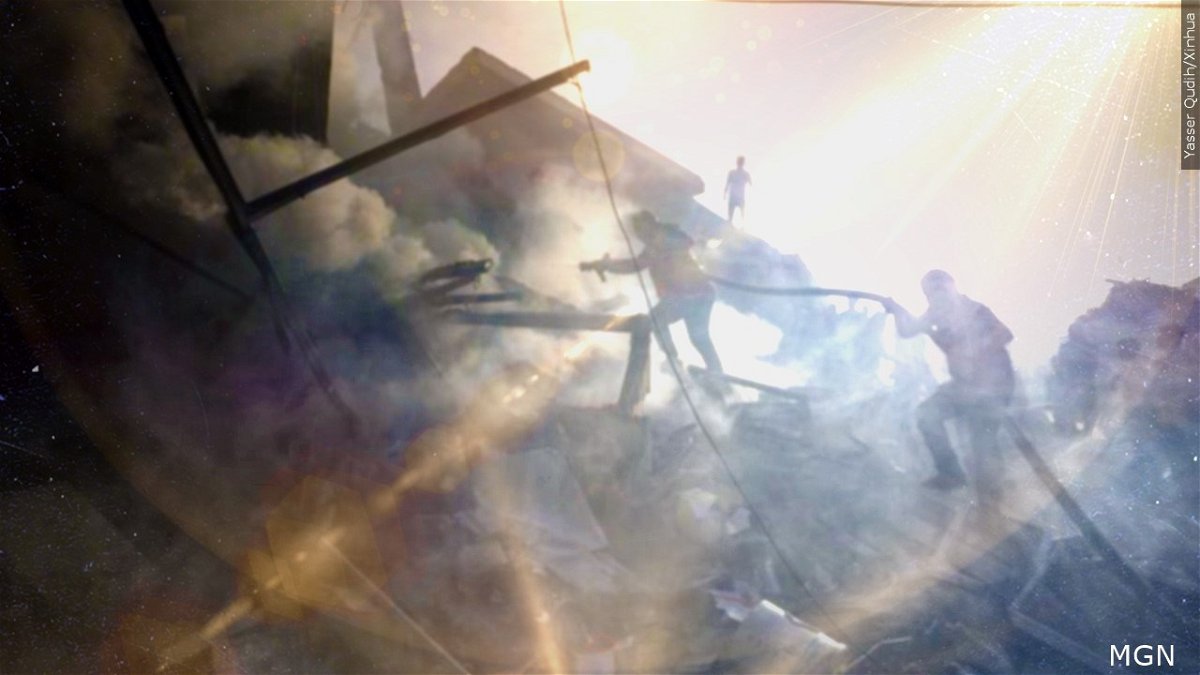The Israeli military has set its sights on southern Gaza. Problems loom in next phase of war

By JOSEF FEDERMAN
Associated Press
JERUSALEM (AP) — After raiding the Gaza Strip’s largest hospital, Israel appears close to completing its takeover of the besieged territory’s northern sector, which it has described as the headquarters of the ruling Hamas militant group.
But as the military sets its sights on southern Gaza in its campaign to stamp out Hamas, key challenges loom: International patience for a protracted invasion has begun to wear thin, and with nearly 2 million displaced Gaza civilians staying in overcrowded shelters in the south, a broad military offensive there could unleash a new humanitarian disaster during the cold, wet winter.
Here’s a closer look at what could lie ahead in the coming weeks:
TWO PHASES
Israel declared war in response to Hamas’ unprecedented cross-border incursion on Oct. 7, when the Islamic militant group killed at least 1,200 people and took some 240 others hostage. Israel has set two goals: a return of all hostages and the destruction of Hamas’ military and governing capabilities.
In the first phase, Israel carried out weeks of blistering airstrikes across Gaza on what it said were Hamas military installations, many of them in residential neighborhoods. Nearly three weeks ago, it launched a second phase – a ground operation aimed at destroying Hamas’ military capabilities in northern Gaza, including an underground tunnel network used to move its supplies and fighters.
The main focus of this phase has been densely populated Gaza City, where Israel says Hamas’ most important military assets are located. After seizing sites such as the former parliament building and police headquarters and the urban Shati refugee camp next to Gaza City, troops early Wednesday raided Shifa Hospital.
The hospital is Gaza’s largest and most important, and at the time of the Israeli raid was treating hundreds of patients with serious conditions, including some three dozen premature babies. Israel rejected Palestinian claims that the raid endangered the patients. It says that Hamas hides important command centers inside the hospital. On Wednesday, it unveiled what it said was a collection of weapons and military equipment it found, but it offered no proof of underground bunkers or sophisticated command centers.
Israeli leaders have expressed satisfaction with the pace of the operation so far. But it has come at a great cost: Palestinian health officials in the Hamas-run government say that over 11,200 people have been killed, the vast majority women and minors. Thousands of homes have been destroyed, and hundreds of thousands of people have fled to southern Gaza, where they live in dire conditions. The army says 46 soldiers have been killed in the ground offensive.
While Israel says Palestinian civilians are safer in southern Gaza, it has continued to carry out deadly airstrikes there on what it says are Hamas targets but has also killed many civilians. Conditions could become even more difficult as Israel turns its focus to the south.
WHY THE SOUTH?
Israeli leaders have largely dismissed international concerns about the rising death toll and deteriorating humanitarian situation in Gaza and have vowed to press ahead until Hamas is destroyed.
That means a push into southern Gaza, where Hamas’ military infrastructure — including thousands of fighters and an underground tunnel network – is believed to be intact. Officials also suspect that Hamas’ top commanders could be hiding in the area.
“There is no place in Gaza that we will not reach,” Prime Minister Benjamin Netanyahu told Israeli troops along the Gaza border on Wednesday. “There is no hiding, no shelter, no refuge for the murderers of Hamas.”
Amir Avivi, a retired general and former deputy commander of the army’s Gaza Division, said that calling off the operation now was not an option.
“You cannot really destroy Hamas without taking the whole Gaza Strip,” said Avivi, who heads the Israel Defense and Security Forum, a group of hawkish former security commanders. “It’s not possible.”
TROUBLE AHEAD
A push into southern Gaza poses several challenges for Israel.
With most of Gaza’s population now crammed into public shelters or private homes and Hamas embedded in residential neighborhoods, heavy street fighting in the south would likely result in high civilian casualties.
Israel says Hamas is responsible for these casualties and accuses it of using civilians as human shields. But the international community — even Israel’s closest ally, the United States — has expressed rising concerns about the civilian death toll. The U.S. has not told Israel to wrap up the war, but it has warned the Israelis that international criticism will grow the longer the war lasts.
Avivi said many displaced Palestinians could move to a “humanitarian zone” that Israel is trying to establish in southwest Gaza, or better yet, to neighboring Egypt. “This is the safest place for them,” he said.
However, each of these scenarios is problematic. Egypt has repeatedly made clear that it does not want a mass of Palestinian refugees in its territory, and the Biden administration has warned that Palestinians must not be pushed out of Gaza.
The proposed humanitarian area, called Muwasi, is relatively small and underdeveloped, with no infrastructure to support hundreds of thousands of people.
Placing people in tents would provide little shelter during the rainy winter months, when temperatures can dip into the single digits Celsius (mid-40s Fahrenheit).
A tent camp would also revive memories of the Palestinians’ greatest trauma. Hundreds of thousands of Palestinians fled or were forced from their homes in the war surrounding Israel’s establishment in 1948 -– a mass uprooting they call the “nakba,” or catastrophe.
Giora Eiland, a retired Israeli general and head of the country’s National Security Council, said international pressure would have little influence.
He said there is such broad support in Israel for the war that it will be hard to stop. He said Israel might reconsider if Hamas surrenders or collapses or can be persuaded through international mediators like Qatar to release all of the hostages -– scenarios that seem unlikely.
With Israel expected to take another two or three months to complete the offensive, Eiland said a worsening humanitarian emergency is “inevitable.”
“I don’t think there is a reasonable way that we can prevent a humanitarian crisis there,” he said. “Everybody can expect to see terrible scenes from there. But it is not going to stop Israel.”


